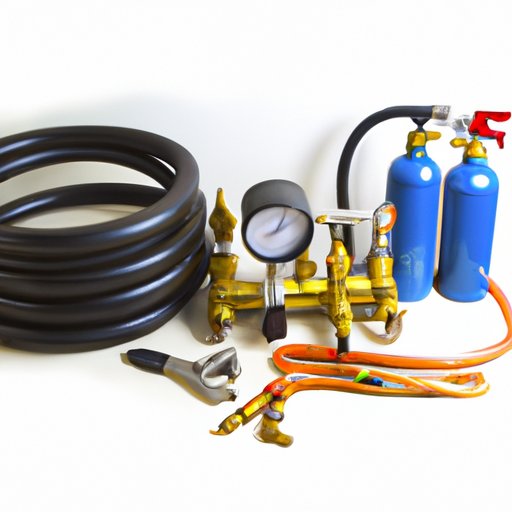Introduction
Having a working air conditioner in your car is essential for comfortable driving. If your car’s AC isn’t working properly, you may need to recharge it. Recharging the AC in your car can be a tricky process, so it’s important to follow the instructions carefully. This article will provide a step-by-step guide on how to recharge the AC in your car.
Check the Compressor
The first step in recharging your car’s AC is to check the compressor. The compressor is the heart of the AC system and is responsible for compressing the refrigerant and circulating it throughout the system. If the compressor isn’t working properly, then recharging the system won’t do any good. To check the compressor, start the engine and turn on the AC. Listen for any strange noises coming from the compressor, and feel around the compressor for any hot spots. If there are any signs of wear or damage, then the compressor may need to be replaced before attempting to recharge the system.
Get an AC Recharge Kit
Once you’ve determined that the compressor is in good working order, the next step is to get an AC recharge kit. These kits typically come with a hose, gauge, and recharge can. The hose connects to the low-pressure side of the AC system and allows the refrigerant to be released into the system. The gauge tells you how much pressure is in the system, while the recharge can contains the refrigerant.
These kits can be found at most auto parts stores or online. Make sure to get the right type of kit for your vehicle, as different vehicles require different types of refrigerants.
Connect the Hose
Once you have the recharge kit, the next step is to connect the hose to the low-pressure side of the AC system. This is usually located near the firewall on the passenger side of the vehicle. Connect the hose to the port and make sure it is secure.
If the port is leaking, it may need to be cleaned or replaced before proceeding. Once the hose is connected, move on to the next step.

Attach Gauge and Recharge Can
The next step is to attach the gauge and recharge can to the hose. Make sure the gauge is securely attached, and then open the valve on the recharge can. This will allow the refrigerant to flow through the hose and into the AC system.
Make sure not to overfill the system, as this can cause damage. If the gauge reads above the recommended amount, close the valve on the recharge can and wait until the pressure drops before continuing.
Release Refrigerant
Once the correct amount of refrigerant has been added to the system, the next step is to release it into the system. This can be done by opening the valve on the recharge can and allowing the refrigerant to flow through the hose and into the AC system. Make sure to keep an eye on the gauge to make sure the pressure is within the recommended range.
Once the desired pressure has been reached, close the valve on the recharge can and move on to the next step.
Monitor Pressure
The final step is to monitor the pressure in the system. This can be done by checking the gauge periodically to make sure the pressure remains within the recommended range. If the pressure drops too low, additional refrigerant may need to be added.
Once the pressure has been monitored and adjusted, the AC system should be ready to use. Make sure to test the system before using it to make sure it is working properly.
Conclusion
Recharging the AC in your car can be a tricky process, but following these steps can help ensure that the job is done correctly. Be sure to check the compressor and get an AC recharge kit before attempting to recharge the system. Additionally, make sure to connect the hose, attach the gauge and recharge can, release refrigerant, and monitor the pressure during the process. By following these steps, you can recharge the AC in your car without any issues.
Remember to always follow the instructions carefully when recharging your car’s AC system. Doing so will ensure that the job is done correctly and your car’s AC system is working properly.


